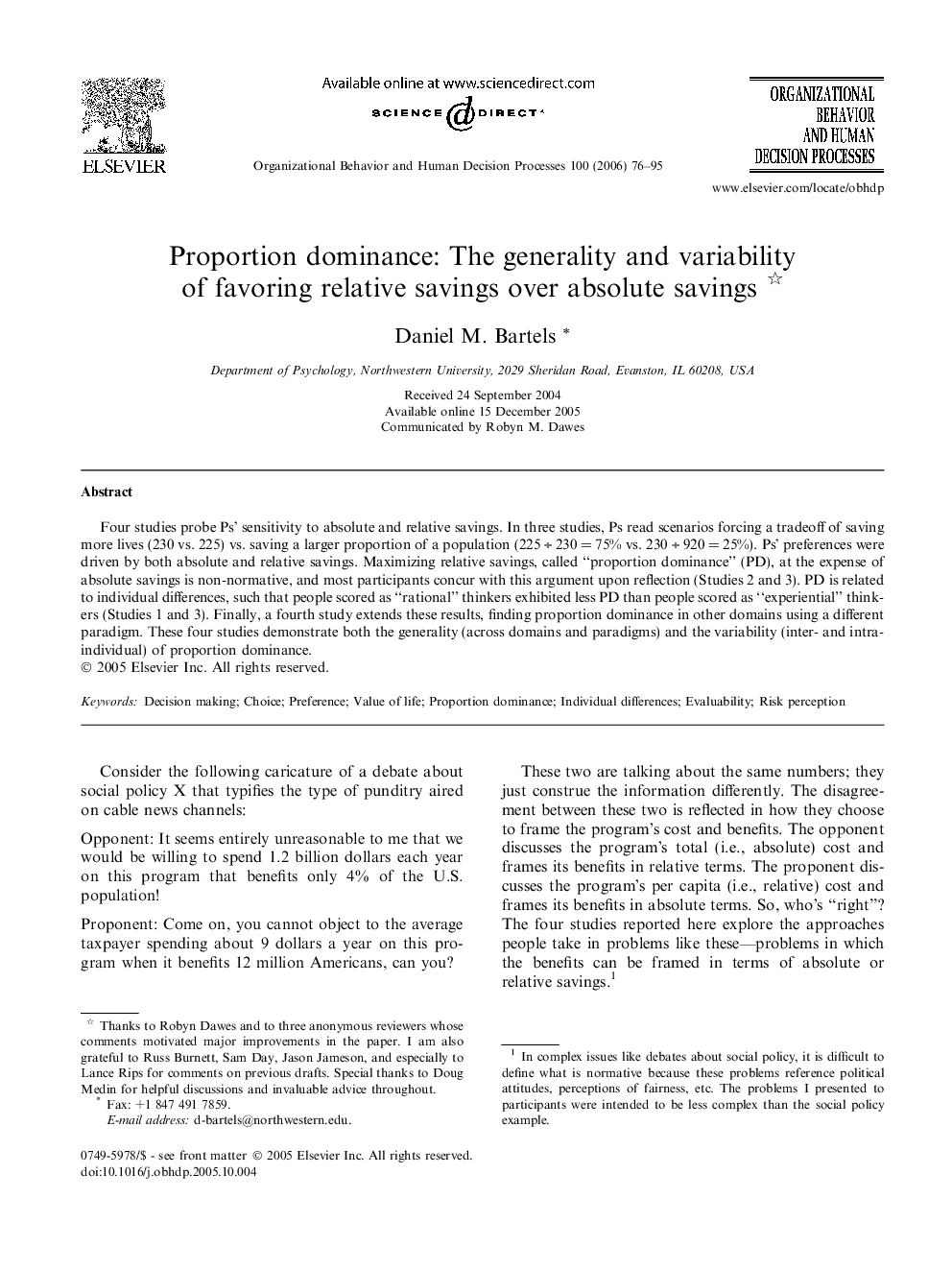| Article ID | Journal | Published Year | Pages | File Type |
|---|---|---|---|---|
| 889073 | Organizational Behavior and Human Decision Processes | 2006 | 20 Pages |
Four studies probe Ps’ sensitivity to absolute and relative savings. In three studies, Ps read scenarios forcing a tradeoff of saving more lives (230 vs. 225) vs. saving a larger proportion of a population (225 ÷ 230 = 75% vs. 230 ÷ 920 = 25%). Ps’ preferences were driven by both absolute and relative savings. Maximizing relative savings, called “proportion dominance” (PD), at the expense of absolute savings is non-normative, and most participants concur with this argument upon reflection (Studies 2 and 3). PD is related to individual differences, such that people scored as “rational” thinkers exhibited less PD than people scored as “experiential” thinkers (Studies 1 and 3). Finally, a fourth study extends these results, finding proportion dominance in other domains using a different paradigm. These four studies demonstrate both the generality (across domains and paradigms) and the variability (inter- and intra-individual) of proportion dominance.
